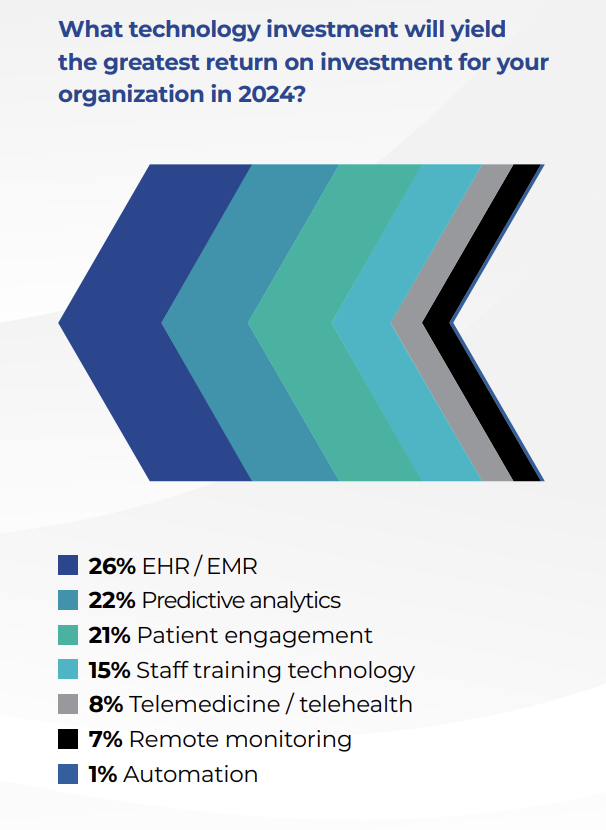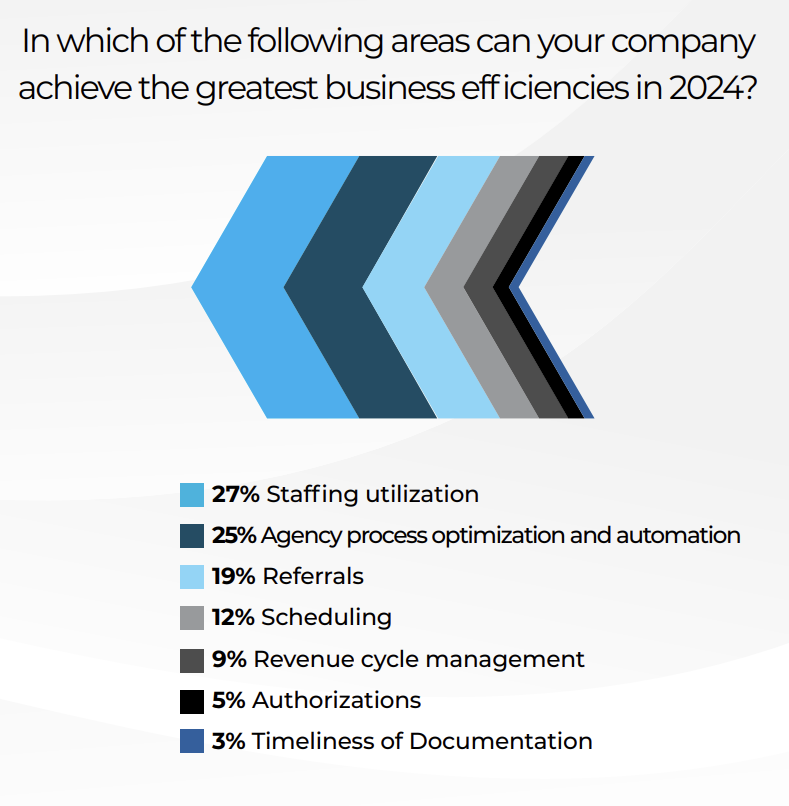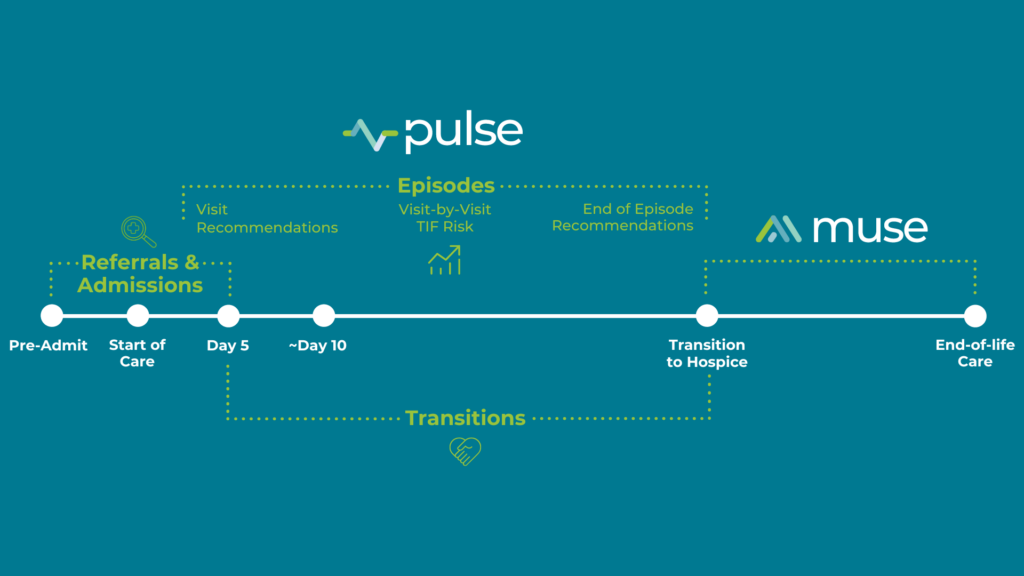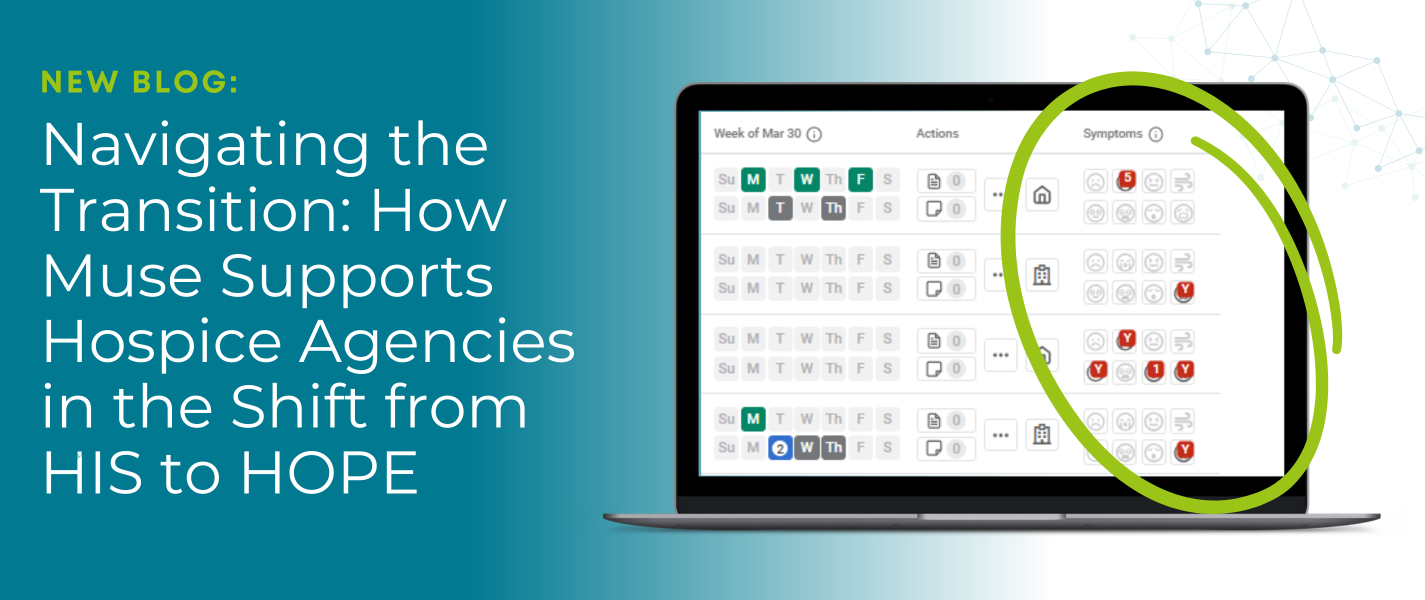Improving collaborative care coordination across home health and hospice
Patients aren’t spending as much time as they could in the right care setting
Coordination of patient transitions and timely understanding of which patients are best suited to hospice care have long been industry challenges. These issues cause too many patients who would benefit from hospice to move too late to fully benefit, or not transition to hospice at all. Patients whose trajectory shows that they are approaching end-of-life care should ideally be identified earlier to facilitate conversations with family and patients about education on hospice resources, compassionate care, and end-of-life planning. Instead, they spend more time in home health than is advisable given their condition, resulting in insufficient care.

When strong hospice candidates aren’t identified and transitioned efficiently, already overstretched home health teams commit high resource utilization to patients who should be in hospice, while rejecting new home health patients due to lack of capacity. In fact, home health rejection rates reached a high of 76% in December 2022. Those who remain in home health longer than they ideally should have a higher hospitalization risk, and when they eventually move, their hospice stay is short, which can impact CMS quality metrics.
In short, poor care coordination practices between home health and hospice have far-reaching impacts on care teams and on patients and their families. This happens in part because home health and hospice are siloed and lack collaboration, and are sometimes at odds, even within the same agency. In many cases, they can’t be blamed, because they lack the tools needed for consistent insight into patient risk and trajectories, as well as cross-functional communication.
Particularly as the home health and hospice ecosystem continues to shift further into value-based care, both quality of care and efficient use of resources are essential to success. Providers are encouraged to holistically meet patient needs and ensure that treatment plans are tailored to individual acuity and priorities. With that in mind, let’s take a deeper look at the current opportunity for better care coordination through applied predictive analytics, and how this improves patient experience, agency efficiency, and collaboration between home health.
Why is care coordination between home health and hospice so challenging?
Current industry issues with cross-functional care coordination are the result, in part, of two core pain points:
- The impossibility of consistent, thorough manual review and understanding of a patient’s condition over time: Patient records are voluminous and complex, and a patient’s condition can change rapidly. Manual review of every patient record after every visit to identify important shifts is challenging for even the best teams. Legacy technologies only look at OASIS data, instead of visit-by-visit changes.
- The difficulty of care coordination, especially between teams using legacy technologies: Home health and hospice teams are often siloed, with limited visibility into the data that inform each team’s respective decisions. Communication and coordination processes are often informal and difficult to track, leading to less efficient decisions and transitions.

Industry survey data support the importance of resolving these challenges. The 2024 Outlook Survey and Report from Homecare Homebase and Hospice News identified key areas of technology investment for hospice, with predictive analytics and patient engagement identified as high priorities. On the home health side of the house, Homecare Homebase and Home Health Care News identified “staffing utilization” and “process optimization and automation” as the highest-potential business opportunities for 2024.

Industry leaders understand that there is space to improve processes and utilization and recognize the importance of predictive analytics and patient engagement as part of the solution. Unfortunately, too many technology solutions perpetuate siloed workflows by addressing an individual challenge in either home health or hospice, instead of building connectivity and stronger care coordination between both care settings. Home health and hospice agencies are at their best when partnered with technology that addresses the root issues, augmenting staff capacity and introducing improved practices.
The right technology drives consistent best fit between patient condition and care environment.
Predictive analytics help fill the space between ideal patient care and the reality of how care is being provided today. Pulse Transitions is a revolutionary product, unique in its impact on both home health and hospice care by providing deeper insights into patient needs and helping identify the right care setting earlier. Leveraging data from throughout complex patient records, Transitions applies breakthrough machine learning to evaluate home health patients visit by visit and identify those most likely to pass away in the next 60days. Patient data is compared against an industry-wide data set to determine hospice appropriateness, and users are presented with the key data they need to make and justify decisions.
While its predictive analytics capabilities are immensely valuable, Transitions goes a step further in providing care teams with workflow management and collaboration tools that address real-world challenges.

Agencies can customize their hospice workflow process to account for any unique structural or procedural elements of their organization. Each patient’s transition workflow is transparent and easy to reference, with clear visibility into notes, needed follow-up, and rationale for removal where appropriate.
Because this solution is intended to break down the walls between different care teams, Pulse Transitions serves as more than just a tool for transition navigatorsby including additional functionality for clinical managers. Those also using Medalogix’s home health solution, Pulse Episodes, benefit from several collaborative features, including visibility into when a patient is in the hospice evaluation workflow, hospice appropriateness recommendations and substantiating detail, and sticky notes from Transition Navigators.

All of this gives care teams an unprecedented capacity for informed, timely end-of-life conversations. The result for patients is a better care experience in a setting that is structurally more supportive of their end-of-life needs. Agencies also benefit from more timely, appropriate transitions:
- Increase in clinically appropriate internal transfers and billable hospice days
- Reduction in deaths on home health census
- Increased length of stay on hospice for improved quality metrics
- Improved screening efficiency for hospice appropriate candidates
- Appropriate reductions in average home health utilization (VPE)
- Decrease in home health rehospitalization rate (TIF)
- Streamlined, less conflicting collaboration between home health and hospice business lines
- Improved patient outcomes (STAR ratings & value-based metrics)
Pulse Transitions is here to help your patients spend more time in the right care setting.
Like our clients across the country, Medalogix is focused on making sure patients receive compassionate, high-quality care. We work to empower providers to meet patient needs and make a difficult time in their life easier where possible. We also recognize that technology built for its own sake and not centered on the patient can place a burden on providers. For these reasons, we’ve built Pulse Transitions to serve as an invaluable ally in helping agencies deliver the best care possible in the right setting for every patient.
Current clients using Transitions (formerly Bridge) have seen impressive results in working through transitions to hospice more effectively and helping patients spend more time there. Transitions leads to 52% fewer deaths on the home health census on average, as well as a 30% reduction in short hospice stays. This means more patients are spending more time in a more appropriate care setting before passing. Today, over 300,000 patients are receiving more appropriate care with the help of Medalogix’s transitions solutions. While the benefits of Transitions are exceptional, Transitions is also part of our broader Pulse platform, which serves as an end-to-end solution for home health providers from referral to discharge. To learn more about applying Transitions in your agency, visit our product page and schedule a demo here.

Related Blogs

Navigating the Transition: How Medalogix Muse Supports Hospice Agencies in the Shift from HIS to HOPE
Authored by: Steven Shelton, MBA, MSN, RN, CHPN; Senior Director, Clinic...

Forcura and Medalogix Join to Create Transformative Post-Acute Care Technology Platform
Berkshire Partners Will Serve as Lead Investor in the New Platform, with...

HHVBP: A Winning Strategy for Home Health Providers
The start of 2025 has ushered in a wave of new realities for Home Health...


